- Quick Read
- Deep Read ( 7 Min. )

Why is Christian Science in our name?
Our name is about honesty. The Monitor is owned by The Christian Science Church, and we’ve always been transparent about that.
The Church publishes the Monitor because it sees good journalism as vital to progress in the world. Since 1908, we’ve aimed “to injure no man, but to bless all mankind,” as our founder, Mary Baker Eddy, put it.
Here, you’ll find award-winning journalism not driven by commercial influences – a news organization that takes seriously its mission to uplift the world by seeking solutions and finding reasons for credible hope.
Explore values journalism About usIn Today’s Issue
- In Gaza and Israel, cries to break the cycle of hope and hopelessness
- Today’s news briefs
- With vote at Alabama plant, UAW challenges South’s antiunion tilt
- ‘Golden visas’: Europe tightens residency rules for the rich
- Want to combat male loneliness? Start by helping boys connect with their emotions.
- A love letter to lilacs and the joys of fleeting pleasure
Monitor Daily Podcast
- Follow us:
- Apple Podcasts
- Spotify
- RSS Feed
- Download
TODAY’S INTRO
Signs of a shift in Israel and Gaza
 Mark Sappenfield
Mark Sappenfield
Listen to the people of Israel and Gaza in today’s remarkable story by Taylor Luck and Ghada Abdulfattah. They’re all saying one thing: It’s time for humanity to have a seat at the table.
One can debate the merits of war. But one cannot debate the effects of war and destruction, which destroy trust, too. Yet without trust, what peace can find any lasting foundation?
People in Israel and Gaza are saying the time for trust-building has come. That, in many ways, will be infinitely more difficult than achieving a military objective. But also infinitely more powerful.
Share this article
Link copied.

Help fund Monitor journalism for $11/ month
Already a subscriber? Login

Monitor journalism changes lives because we open that too-small box that most people think they live in. We believe news can and should expand a sense of identity and possibility beyond narrow conventional expectations.
Our work isn't possible without your support.
In Gaza and Israel, cries to break the cycle of hope and hopelessness
Israeli hostages’ families and Palestinians in Gaza are on opposite sides of the war yet on the same taxing emotional roller coaster. So how to maintain hope? As one interviewee put it, “We are all human beings at the end of the day.”

-
Ghada Abdulfattah Special contributor
Hopes dashed, trust broken, families of Israeli hostages and Palestinians in Gaza are focusing on survival, as another violent phase of the war threatens. The two cohorts have careened from hope to hopelessness, after a week that flirted with a cease-fire yet included an Israeli military incursion into Rafah.
With Hamas announcing two additional hostage deaths, and scores of thousands of Palestinians once again fleeing under Israeli bombs and military orders, for many it feels like a return to the war’s beginning.
“When Israel sent the evacuation orders, I felt that the war is starting all over again,” says Hala Dadah, whose family left Rafah for central Gaza Sunday. “We are on a roller coaster – one moment a cease-fire, the next moment war.”
Many distrust both their leaders and the other side, yet Gazans and hostages’ families unite in one belief: Only a cease-fire and return of hostages can end the suffering; more war leads only to more deaths.
“The only way to end this is to sit around a negotiating table and [be] creative,” says Daniel Lifshitz, whose grandfather is the oldest held hostage. “Both sides have to stay there and not think that using muscle will bring a solution, because it hasn’t.”
In Gaza and Israel, cries to break the cycle of hope and hopelessness
Hopes dashed, trust broken, families of Israeli hostages and Palestinians in Gaza are focusing on survival, as another violent phase of the war threatens.
The two cohorts have been on an emotional roller coaster, careening from hope to hopelessness, after a week that saw Hamas’ declared “acceptance” of a cease-fire deal, accusations of deception, and an Israeli military incursion into Rafah.
With Hamas announcing two additional hostage deaths, and scores of thousands of Palestinians once again packing up and fleeing under Israeli bombs and military orders, for many it feels like a return to the beginning of the war.
“When Israel sent the evacuation orders, I felt that the war is starting all over again,” says Hala Dadah, a mother of 10 who left Rafah for central Gaza Sunday. “We are on a roller coaster – one moment a cease-fire, the next moment war.”
Many distrust both their own leadership and the other side, yet Gazans and hostages’ families remain firm in one belief: Only a cease-fire deal and return of hostages can end the suffering; prolonging the war leads only to more deaths.
“The only way to end this is to sit around a negotiating table and [be] creative,” says Daniel Lifshitz, whose grandfather Oded Lifshitz is the oldest held hostage. “Both sides have to stay there and not think that using muscle will bring a solution, because it hasn’t.”
Hostages’ families
The last week has been a blow to relatives of Israeli hostages. Many quit their jobs to work full time to bring their loved ones home through diplomacy, memorials, protests, and endless media interviews.
Hundreds, like Simona Steinbrecher, still live in hotels, displaced from homes incinerated Oct. 7.

Ms. Steinbrecher keeps two photos of her youngest daughter, Doron, who turned 31 years old in Hamas captivity in March.
In one pre-Oct. 7 photo, Doron is smiling with friends; in the other, taken from a proof-of-life video released by Hamas in February, she looks gaunt, haunted, the spark gone from her eyes.
“I am afraid to hope. I am afraid to believe,” Ms. Steinbrecher says. “If I start hoping, then I will stop fighting – and I need to keep fighting until the day my daughter is with me.”
Until then, “we are still trapped on Oct. 7.”
Solace is found in the Hostages and Missing Families Forum – a network of relatives, advocates, media experts, psychologists, and politicians who provide social and emotional support. The forum seeks to pressure both the Israeli government and, through other countries, Hamas, to reach a cease-fire deal.
Yet despite several meetings with world leaders and the support of governments from the United States to Qatar and Sweden to Britain, there has been little progress, casting a pall over Israel’s observances this week of Memorial and Independence days.
Hamas’ reported position that not all hostages released in the first phase of a deal would be alive, followed by its stating that two more hostages had died, was described as “devastating.”
“How can I have trust when the world is not able to help release an 84-year-old man, a great-grandfather? How can we trust anyone?” asks Mr. Lifshitz.
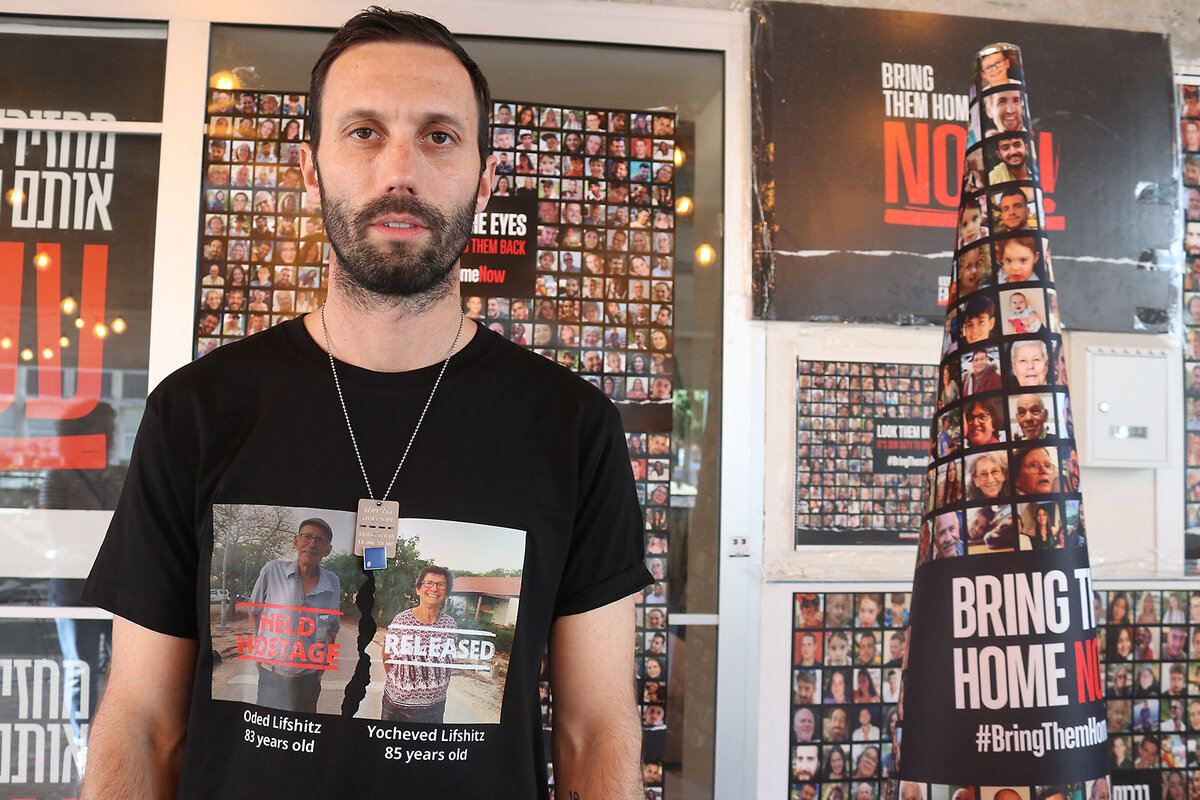
Many share a feeling that Hamas is “playing for time,” and that Israel’s own government, led by Benjamin Netanyahu, is not taking talks seriously enough, prioritizing an offensive in Rafah. Mediator Qatar warned Tuesday that due to the offensive, negotiations were heading “backward.”
Many agree: An offensive in Rafah and prolonging the war will not bring the hostages home.
A poll released last week showed, for the first time, that a clear majority of Israelis prioritize a hostage deal over a Rafah offensive.
Thousands protested across Israel and at Memorial Day events attended by Mr. Netanyahu and Cabinet officials.
“Many people have said that the hostages can only come back through war, but there has been fighting and our hostages still have not come back,” says Ms. Steinbrecher who, along with her elder daughter and two grandchildren, survived the Hamas assault on Kibbutz Kfar Aza. “We must try something else: The only thing left is to make a deal.”
“What will happen if we go into Rafah?” asks Mr. Lifshitz, whose best friend also was kidnapped by Hamas. “The result will be more hostages dead. It has been proven before and will be proven again.”
Udi Goren is a photojournalist and activist whose cousin Tal Haimi was killed Oct. 7. He says families are caught between a government that continues to pursue its political interests that “go against our goal of bringing the hostages home” and a cynical “Hamas who could end the war today by releasing the hostages.”
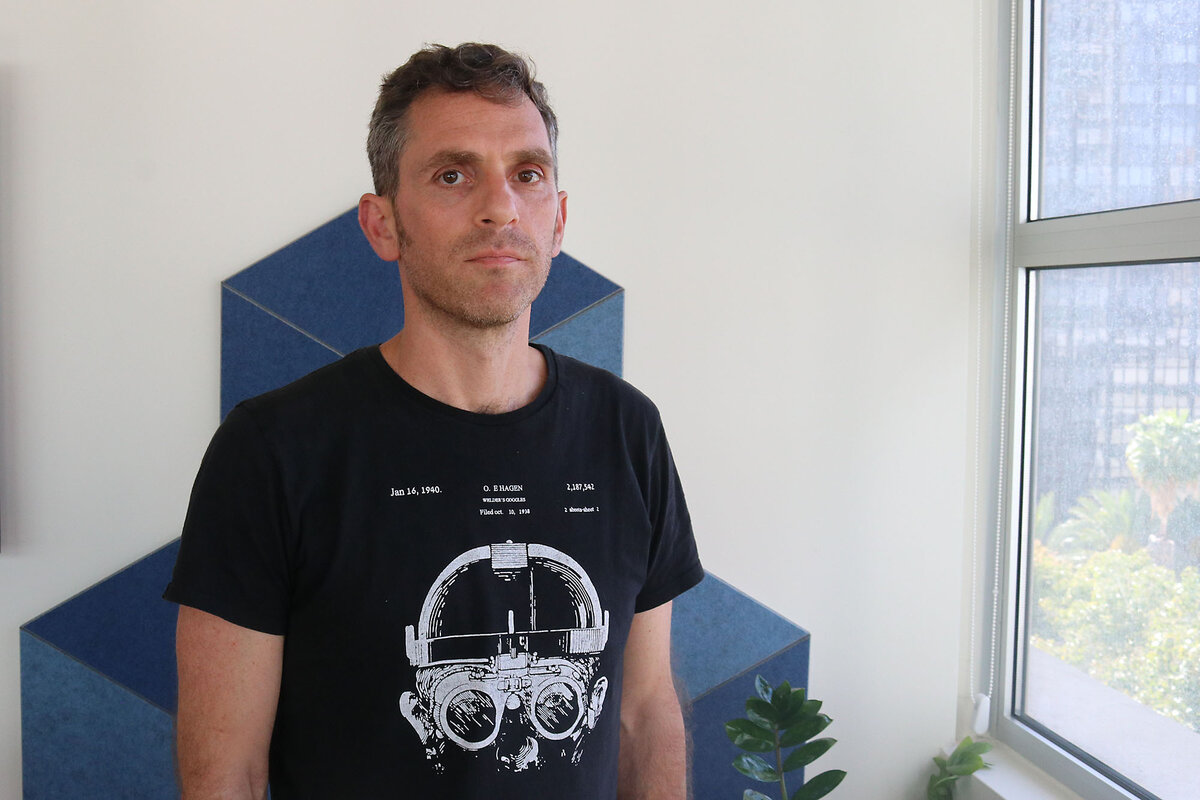
“I feel a sense of urgency on one hand and on the other an overwhelming sense of failure because our families are not here and they are dying,” he says.
“I don’t feel that the hostages are the priority for everyone,” Mr. Lifshitz adds, “but I feel they are the solution to everything.”
Return to October
The past week brought a stark change for Palestinians in southern Gaza who went from celebrating in the streets to migrating under fire in 48 hours amid Israeli military offensives that are under way simultaneously in northern and southern Gaza.
With the coastal al-Mawasi “safe zone” full and lacking basic sanitation, many of the estimated 450,000 Palestinians pushed from Rafah in recent days are winding up in central Gaza, such as in the town of Zawayda near Deir al-Balah.
They arrive in beat-up, crammed cars with mattresses tied to the roof and whatever remaining possessions they could fit in the trunk or on their laps. Others arrive on donkey carts. Tent encampments are popping up everywhere.
When Hamas announced suddenly last Monday it had agreed to a cease-fire, Heba Zaqqout, a nongovernmental organization worker and displaced mother of three, was at her apartment. Like many, she took part in impromptu celebrations.
“We cheered. We celebrated. We hugged each other,” she says Sunday as her family, freshly arrived from Rafah, pitches their tent on the sandy ground. “Two days later, the Israelis dropped leaflets on some areas in eastern Rafah telling us to leave.”
The apparent failure of talks has only deepened the mistrust of displaced Palestinians – war-weary, underfed, and exhausted.
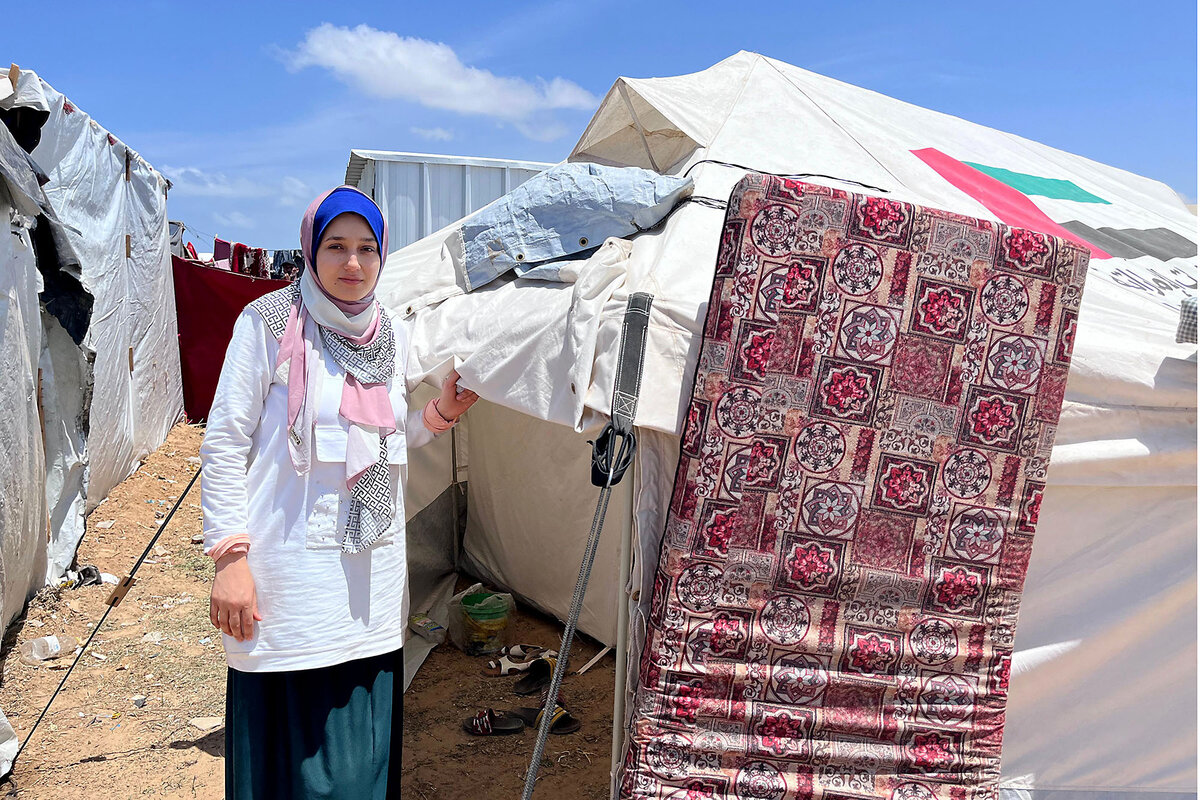
“We do not trust anyone or any party,” Ms. Zaqqout says, shoveling muddy sand on their tent site. “I can’t trust the media or spokespeople. Because what is being said on the news is one thing, but what is happening on the ground is something else.”
Many of those fleeing Rafah had originally been displaced from Gaza City in mid-October and are reliving their flight.
“When the Rafah invasion began, I felt like we returned back to Oct. 13,” says Ms. Zaqqout. “We are all living in a sea of darkness. I wish for the sun of peace to rise again.”
When Israel began military operations in eastern Rafah, Ms. Dadah and her family went from Rafah to al-Mawasi and then to Khan Yunis, finding neither space nor shelter nor safety from intensified Israeli shelling and bombing.
“We are running from one place to another, from one fate to another,” she says.
“My children are burnt out. They no longer have dreams or wishes; they only search for water,” says Ms. Dadah. “We have lost all types of hope. When you see people running after food handouts, there is no room to think of hope – all you can think of is how humiliating our life has become.”
“Why should I be optimistic?”
Kifah Mohammad Abdulhadi, a mother of five, was displaced from northern Gaza, fleeing to Nuseirat in central Gaza, Khan Yunis, Rafah, and back to central Gaza.
“Why should I be optimistic?” she says. “Even when Hamas signed on and agreed, I wasn’t that happy. I knew that without Israel’s agreement, it meant nothing.”
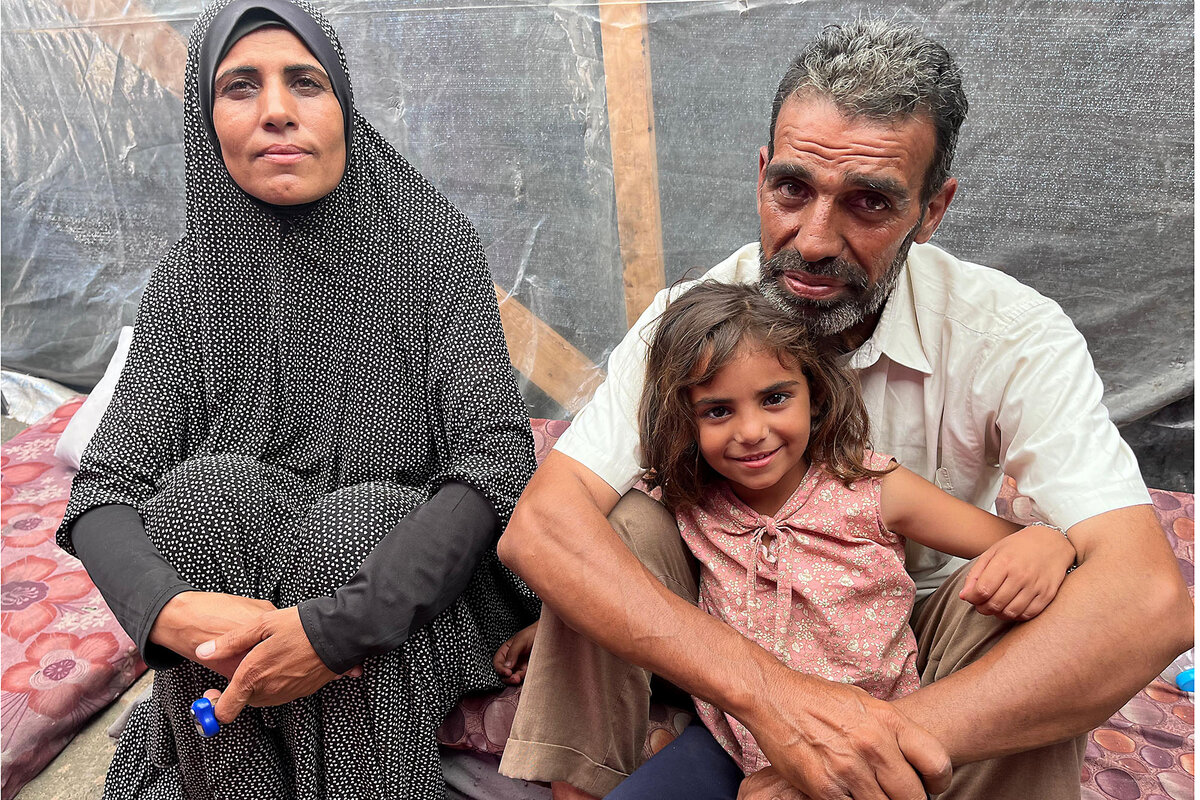
Nimat Abu Jabal and her family had been living in Rafah for four months, and previously Khan Yunis, after they were displaced in late 2023 by fighting in Gaza City.
On the way to central Gaza, limited to one car, she was forced to throw away much of their clothes and few remaining household items. She is tired, wary.
“I wish I had been killed” instead of being uprooted again, Ms. Abu Jamal says. She, like most Gazans, says her family is trapped in a “full cycle of displacement.”
“When there were discussions of a cease-fire, I felt hopeful the war might end. Now we do not dare plan or think of the future,” she says.
As negotiations stall, hopes are scarce, yet on both sides people try to cling to bright spots.
“I have hope because we have so many other families whose relatives may still be alive,” Mr. Lifshitz says, “But personally, for both my grandfather and my best friend, I feel a bit lost and hopeless.”
“They gave us a bit of hope when the cease-fire talks were extended,” says Ms. Zaqqout. “I feel we will have a cease-fire eventually. We are all human beings at the end of the day.”

Today’s news briefs
• Biden’s China tariffs: The Biden administration plans to put new tariffs on Chinese electric vehicles, advanced batteries, solar cells, steel, aluminum, and medical equipment.
• Arizona abortion decision: Arizona’s highest court gives the state’s attorney general another 90 days to decide further legal action in the case over a 160-year-old, near-total abortion ban.
• “Foreign agents” bill: The Parliament of the nation of Georgia passes a bill that would require organizations receiving more than 20% of their funding from abroad to register as agents of foreign influence.
• Roman Polanski cleared: A French court acquits the filmmaker of defaming British actor Charlotte Lewis, who had accused him of sexual assault.

With vote at Alabama plant, UAW challenges South’s antiunion tilt
If Mercedes employees in Alabama vote this week to join the United Auto Workers, it may signal an important shift in America’s most union-resistant region.

- Quick Read
- Deep Read ( 6 Min. )
-
Patrik Jonsson Staff writer
Mercedes workers here in central Alabama hold organized labor’s hopes for the South in the palms of their hands.
If they vote to allow the United Auto Workers to represent them, they would become only the second foreign-owned auto plant in the region to unionize and give the UAW important momentum. If they vote with management, they will add to a long line of failed efforts to organize America’s most union-resistant region. The voting began on Monday.
The union faces an uphill battle because of cultural, racial, economic, and political factors that stretch back to the Civil War.
Yet here in Vance, spirits are running high. Last fall, new union leadership pulled off a victory as General Motors, Ford, and Chrysler parent Stellantis agreed to a pay raise of at least 25% over four years, the elimination of a lower pay scale for some workers, and a reinstatement of cost-of-living increases.
“The strike in the fall was the first time the UAW was able to show workers in these plants in the South that they could deliver,” says Stephen Sylvia, a political scientist at American University. And workers in the South are taking notice.
With vote at Alabama plant, UAW challenges South’s antiunion tilt

The first time Rob Lett saw a worker wearing a red union hat at his sprawling Mercedes plant, he thought, “Wow, that takes courage.”
His second thought: “Why doesn’t he get fired?”
Unions have long found the American South to be hostile territory. But Mercedes workers here in central Alabama now hold organized labor’s hopes for this critical region in the palms of their hands.
If the Mercedes workers vote this week to allow the United Auto Workers to represent them, they will become the second foreign-owned auto plant in the South to unionize, giving the UAW important momentum. If they vote no, they will add to a long line of failed efforts to organize America’s most union-resistant region. The voting began on Monday and continues through Friday.
“A lot here is going to depend on the vision of unionism that the United Auto Workers can put forward,” says Rick Halpern, professor of history and director of American studies at the University of Toronto. If the vote is just about wages and benefits, its impact is limited, he says. “But if there’s a larger vision about democracy in the United States, and about transforming the way in which capitalism is operating and making it more equitable, then I think we may be seeing something very, very powerful.”
A stretch of highway that tells a story
Such a shift would be an uphill battle here in the South, due to cultural, racial, economic, and political factors that stretch back to the Civil War. A half-hour stretch of Interstate 20 illustrates the challenge.
A few miles west of this Mercedes plant, in Brookwood, Alabama, lies the headquarters of Warrior Met Coal. For two years, plant employees who were members of the United Mine Workers stayed off the job, pressuring management for a new contract. Last year, the union called off the strike without winning any concessions – an ignominious defeat.
Less than 30 miles to the east, in Bessemer, workers at a local Amazon fulfillment center still don’t know if they’ve officially joined a union, even after two years and two votes. A judge has just started a monthslong process to sort it out.
Here in Vance, by contrast, spirits are running high. Last fall, new union leadership pulled off a stunning victory at Detroit’s big automakers, securing the best new contract in decades. General Motors, Ford, and Stellantis (Chrysler’s parent company) agreed to a pay raise of at least 25% over four years, the phasing out of a lower pay scale for some workers, and the reinstatement of automatic cost-of-living increases.
“The strike in the fall was the first time the UAW was able to show workers in these plants in the South that they could deliver,” says Stephen Silvia, a political scientist at American University and author of “The UAW’s Southern Gamble: Organizing Workers at Foreign-Owned Vehicle Plants.”

Workers in the South take notice
Last month, Volkswagen employees in Chattanooga, Tennessee, became the first workers to ratify a union at a southern auto plant not owned by one of the Detroit carmakers – a historic win. Earlier in May, UAW members approved a new, higher-wage contract at Daimler Truck, a heavy-truck unit of the same company that owns Mercedes, with six facilities in the South. Now, Mercedes workers here in Vance are voting on whether to follow in Volkswagen’s footsteps. It will be a tougher challenge.
At Volkswagen, the Germany-based management – under pressure from its German workers – agreed to stay neutral in the Chattanooga ratification vote. By contrast, the Mercedes-Benz Group has taken a more traditional, antiunion approach. On the plant fence, management put up a banner urging workers to vote in the ratification election. On the other side, it read, “Vote No.”
Managers have held mandatory worker meetings explaining why they should vote against the UAW. Workers say the company has hired an antiunion consulting firm that helped Amazon push back against the union in Bessemer.
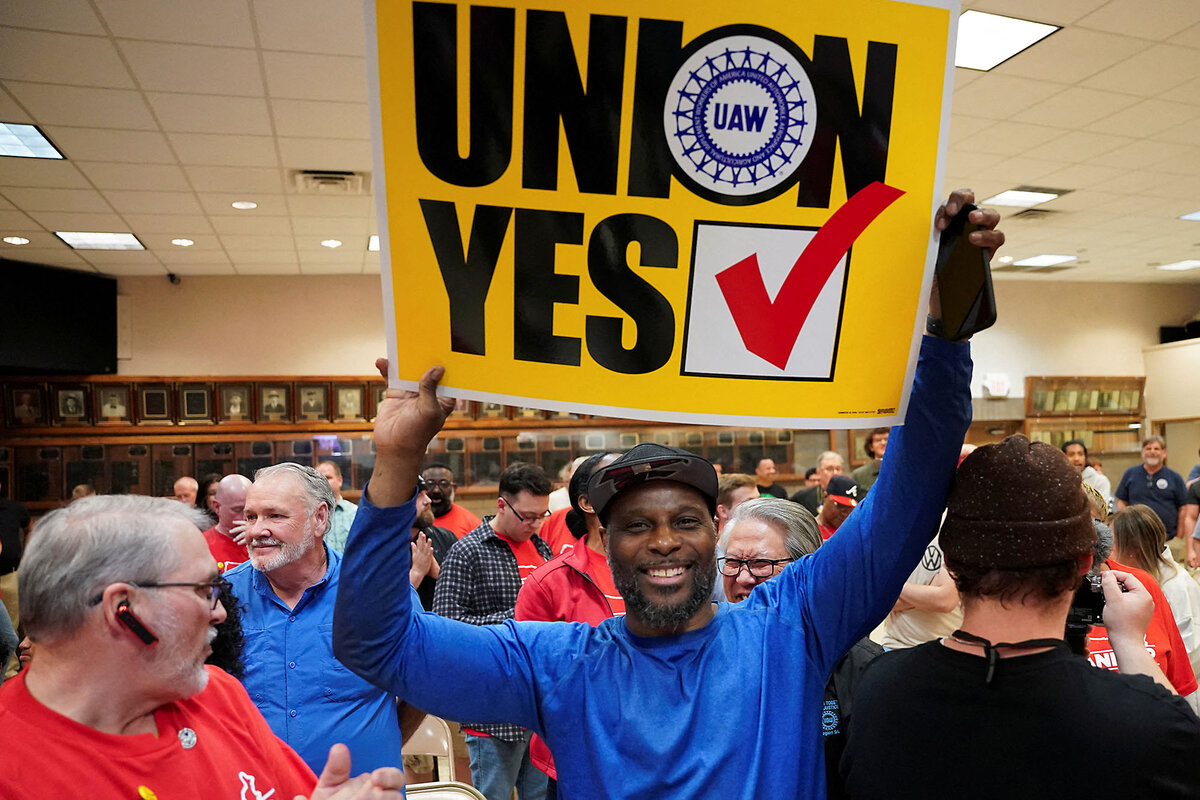
Unions threaten economic model
Political opposition to organized labor also remains potent in the South, particularly in states with Republican governors. In South Carolina, where German automaker BMW has a plant that’s a likely UAW target, Gov. Henry McMaster (R) said in a January speech that he would fight unions “to the gates of hell.” Alabama Gov. Kay Ivey (R) has called the effort at Mercedes an “attack” on the state’s economic model.
Unionization does, in fact, threaten the South’s longtime economic model. Ever since the late 19th century, when textile mills moved down from New England to escape demanding unions, leaders here in Alabama have promised factory owners low-priced land and labor. Even after slavery’s end, the region continued its reliance on oppressed labor – sharecroppers, tenant farmers, and people who had been convicted of crimes.
“There’s a long tradition there of unfree labor,” says Robert Korstad, emeritus professor of public policy at Duke University and author of a 2003 book on Southern tobacco workers’ struggle to unionize.
Economically, the pitch worked. Attracted by cheap land and low labor rates, waves of outside industries set up shop, including Northern steel plants in the 1960s and 1970s and foreign-owned auto plants starting in the 1980s. Unions, which tend to raise wages and give workers more say, were not welcome in that economic model.
States competed to offer incentives to outside companies to relocate and collaborated to keep unions out. They passed “right-to-work” laws, so workers wouldn’t have to pay union dues even if their plant were organized. Antiunion politics that started as a Southern Democratic strategy to keep African Americans from organizing among themselves and with poor white Americans morphed into a Southern Republican laissez-faire movement.
Individual over collective action
Culturally, too, the South has long prized individual over collective action. Even many blue-collar workers are suspicious of the organizing efforts. Such efforts in South Carolina have failed at Boeing and, more recently, at a nuclear fuels plant.
“I am very against unions,” says Howard Gilmore, manager for a local logistics contractor that supplies the Mercedes plant. If his shop were unionized, he says, he would have trouble firing people who refused to do their work. Already, workers job-hop from plant to plant, he adds, taking advantage of hiring bonuses and leaving when the work gets too onerous.
But the lure of a contract with big pay raises may prove even more decisive for many Mercedes workers voting on unionization this week. What’s different now is a “sense of disaffection and resentment,” says Mr. Lett, the plant worker. “It has a whole different fire about it. Before, it was just an idea. Now it’s become something tangible.”
Mainly, workers here complain that a tiered system pits some employees against others. Temporary workers get up to $10 an hour less for doing the same tasks as full-time workers. Employees also say they have seen their benefits lag.
Some workers also question the region’s lower-wage economic model, which Mercedes worker Jeremy Kimbrell calls the “Alabama discount.”
Demographics add their own twist. The South skews younger than the rest of the U.S., and younger workers are more often open to considering union membership. An influx of workers from other states – and other nations – has also made the region’s politics less conservative.
“I think the conditions [for unions] in the South now in 2024 are better than they have been in decades, probably better than they’ve ever been,” says Georgetown University historian James Benton.
Patrik Jonsson reported from Vance, Alabama. Laurent Belsie reported from Waltham, Massachusetts.

‘Golden visas’: Europe tightens residency rules for the rich
“Golden visas” are meant to offer quick access to residency in a country in exchange for a large investment. But governments are now wondering: Is that sort of deal beneficial to their societies?

- Quick Read
- Deep Read ( 5 Min. )
In the wake of the 2008 financial crisis, a number of European countries started to raise money by selling residency rights, and sometimes citizenship, to wealthy foreigners. That could cost as much as a million dollars, and between 2011 and 2019 Europe raked in an estimated $22 billion.
But now a number of governments are having second thoughts. Some are tackling affordable housing crises, which is harder if you allow people to qualify for a visa by buying expensive houses.
Other countries point to the security risks of selling residency permits to the highest bidder.
Spain, Portugal, Ireland, Bulgaria, Latvia, and Britain are among the nations that have tightened the rules governing “golden visas.”
But the days of the golden visa are not over yet. Investors in sectors that governments want to encourage – such as sustainable agriculture or scientific research – can still qualify for residence in a number of places. It’s just that buying a house is no longer enough.
Benjamin Trotter, an American hoping for Portuguese residency, got his application in under the wire, before the government cracked down.
It won’t be long, he says, until he can “put some roots down ... but I need the legal right to do so.”
‘Golden visas’: Europe tightens residency rules for the rich

In his Tennessee high school valedictorian speech in 1998, Benjamin Trotter invoked Socrates: “I am neither Athenian nor Greek, but a citizen of the world.”
Fast-forward two decades, and Mr. Trotter began to feel less at home in his own country. Worn down by divisions in American society, he began to fantasize about living in a place where he wouldn’t have to worry about the erosion of his rights as a member of the LGBTQ+ community. His gaze turned to Europe.
Being a citizen of the world, though, comes with a steep price tag: €350,000 ($377,000).
That’s on the low end for what is known as a “golden visa,” a document that grants residence to investors who make a significant contribution to a country’s economy. In exchange for Mr. Trotter’s investment, Portugal would grant him residency, giving him access to the entire European Union and, eventually, one of the most accepted passports in the world.
Since he applied, though, the tide across Europe has begun to turn against residency-by-investment programs, set up in the aftermath of the 2008 financial crisis to attract foreign capital.
Last month, Spain became the latest country to announce the end of a golden visa program for real estate, following recent moves by Portugal, Ireland, Bulgaria, Latvia, and the United Kingdom. Some politicians say they are trying to tackle affordable housing crises worsened by recent influxes of wealthy foreigners. Others point to the security risks of selling residence permits to the highest bidders.
The shift in policy reflects a deeper challenge facing Europe when it comes to regulating the future of globalization. The growing expectation of free mobility is coming up against concerns about who gets to reap its benefits – and under what conditions.
“European values are not for sale,” said Didier Reynders, EU commissioner for justice and consumers, in a 2022 press release urging member states to retract their golden passport programs. Whether that’s true in practice is another question.
“It’s not the end of the golden visa,” says Paula Schmid Porras, a Spanish immigration lawyer and professor of law at the University of Seville. Applicants in Spain, for example, can still qualify by investing in sectors the government is seeking to encourage. “If you’re poor and an immigrant, it’s difficult” to earn residency in Spain and other countries, she adds. “But if you’re rich, you have a red carpet.”

Russians, Chinese, and Iranians the big golden visa winners
Golden visa schemes emerged in the 1980s, first in the Caribbean, and then in Canada and the United States. The trend gained popularity in Europe in the early 2010s as governments looked to boost struggling economies. In Spain, foreign capital helped restore a collapsed real estate market.
The programs tend to have few requirements, in some cases needing only a short visit to the country each year. While some promise full citizenship, others offer residency rights and a pathway toward naturalization. Their prices range from €150,000 to over €1 million, earning Europe an estimated €21.4 billion between 2011 and 2019.
During the pandemic there was a surge in interest in golden visas among Americans looking for lifestyle alternatives. But the largest share of beneficiaries are those whom researcher Kristin Surak has called “the non-Western winners of globalization.” In Spain, the majority of golden visa recipients are elites from Russia, China, and Iran, says Ms. Schmid Porras.
Russia’s invasion of Ukraine in 2022 prompted the EU to worry more about security considerations; the EU Commission urged member states to end their investor citizenship schemes and tighten controls on investor residency programs. Concerns about money laundering and other illicit activities pushed Ireland, the U.K., Bulgaria, and Latvia to scrap their golden visa programs. But Hungary, the EU country most sympathetic to Moscow, is relaunching its golden visa.
“The risk arises when there are no proper checks on the procedures,” says Roland Papp, a senior policy advisor with Transparency International, an anti-corruption watchdog. He says business partners of Syrian dictator Bashar al-Assad gained EU residency through a Hungarian investment program. The EU took Malta to court in 2022 for a golden passport program it says doesn’t meet European law.
Whose houses are they, anyway?
Others are pushing back against the local ramifications of an increasingly globalized world. Spanish Prime Minister Pedro Sánchez announced the end of his country’s real estate golden visa in an effort “to guarantee that housing is a right and not a mere speculative business.”
In 2023, a record 15% of the homes sold in Spain were bought by foreigners, and double that in some provinces like the Balearic Islands and Valencia. Many become short-term rentals for tourists.
Yet those in the real estate industry say the decision won’t do much to ease Spain’s housing woes. Less than 0.6% of the homes sold in 2023 were bought through the golden visa scheme, according to property website Idealista.
“They needed to blame someone,” says Mr. Trotter, sitting at a sunny cafe in Madrid. “In reality, they love the investment.”
Like Spain, Portugal scrapped its golden visa for real estate investments last year. But hopeful residents with the resources can still invest in qualifying sectors ranging from sustainable agriculture to culture and scientific research.
Those types of programs make a difference “for the progress and development of that country,” says Joana Mendonça, head of the legal department at Global Citizen Solutions, an investment migration firm.
“The ability to move around the world and to travel and to seek the best place for one to settle – I think this is something we should facilitate,” she adds. Yet she acknowledges that “not everyone is able to invest that amount of money.”
Mr. Trotter, too, knows it’s a privilege to be choosing where his spot in the world might lie.
“It was simply the luck of the draw of being born on a certain soil,” he says. “To turn a blind eye [to other migrants] seems irresponsible.”
He applied for his golden visa in 2021, before Portugal’s recent restrictions. As he waits for it to be processed, he has hopped from Mexico to Spain to Italy, exploring an artistic side of himself through pottery and sculpture that used to lie dormant in the U.S.
“I do want to put some roots down and start creating a community, but I need the legal right to do so,” he says.
In the meantime, he’s still working to emulate Socrates, with no regrets about leaving his home country behind: “It’s really nice to be away from that hamster wheel.”

A deeper look
Want to combat male loneliness? Start by helping boys connect with their emotions.
Boys are expected to be tough and independent. But society’s emphasis on these qualities can leave them feeling adrift and alone. Parents and educators are finding ways to help boys cultivate emotional connections.
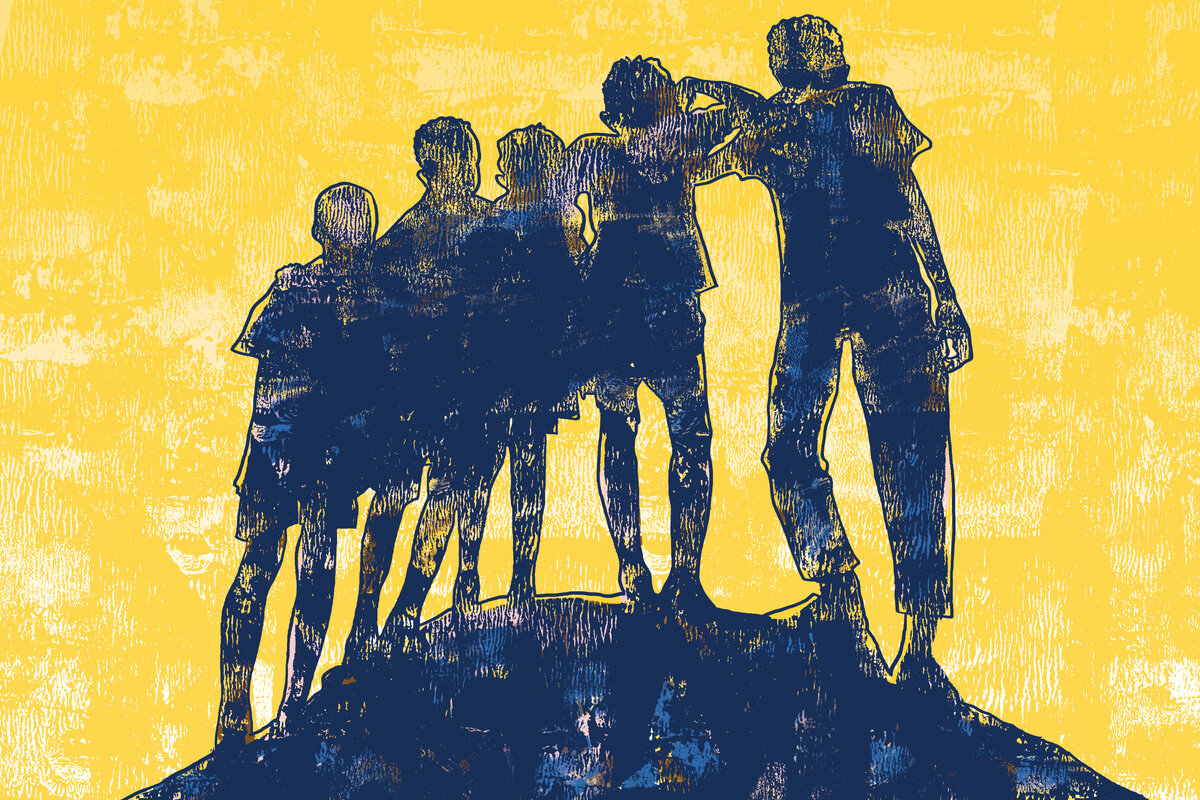
- Quick Read
- Deep Read ( 12 Min. )
-
By Courtney E. Martin Special contributor
When a preschool teacher told her 2-year-old son that she “liked him more when he didn’t cry,” Kimmi Berlin was worried.
She and her then-husband had been trying to raise their children outside the stereotypical gender norms they had grown up with. But they were stumped. “We knew the old scripts didn’t work, but we didn’t even know what the new scripts were,” she says.
They asked the teacher to encourage their son’s full range of emotion, but they also craved a more collective solution.
That’s when Ms. Berlin decided to create Build Up Boys, an organization in Montclair, New Jersey, that trains educators and caregivers to help boys “preserve their innate emotional intelligence.”
In recent years, such countercultural programming has taken root in communities around the United States. The strategies are varied, but these efforts share one key goal: foster emotional supports for boys.
In Boston, Charles Daniels Jr., a therapist, focuses on fathers. His clinic is bustling with men who have committed to working on their mental health in order to show up for their children more consistently.
“Fathers are oxygen,” he says. “You need them to breathe freely as a boy, to understand what you can become.”
Want to combat male loneliness? Start by helping boys connect with their emotions.
In a crowded coffee shop on Telegraph Avenue in Oakland, California, Ruth Whippman spots a group of men in their 60s and 70s at a nearby table. They’re sipping tea and chatting, and one of them gently pats the golden retriever at his feet. Another gives a hearty hug to a new man who walks in to join them.
Ms. Whippman is struck by the serendipity. Here she is, talking about her forthcoming book, “BoyMom: Reimagining Boyhood in the Age of Impossible Masculinity,” a meditation on the loneliness, conflict, and isolation that so many boys and men face. This group of guys nearby is enacting what Ms. Whippman argues is one essential solution to male loneliness: participation in intimate, authentic relationships.
The statistics are startling: Boys are falling behind in school, dropping out, and struggling to get into college and stay there. Even those who do face increasing mental health challenges. Boys today are more violent, more addicted to screen time, more lonely, and more likely to die by suicide than girls are. Even as the public conversation continues to bust out of the binary and talk more about the spectrum of gender, it seems that many boys are flailing.
Ms. Whippman is so invested in the topic because she’s the mother of three boys. She remembers being pregnant with her third child in 2017, tossing and turning in bed, worrying about the typical litany of things one worries about when on the precipice of giving birth: Would she be safe? Would she have enough time and energy? Would she ever sleep again?
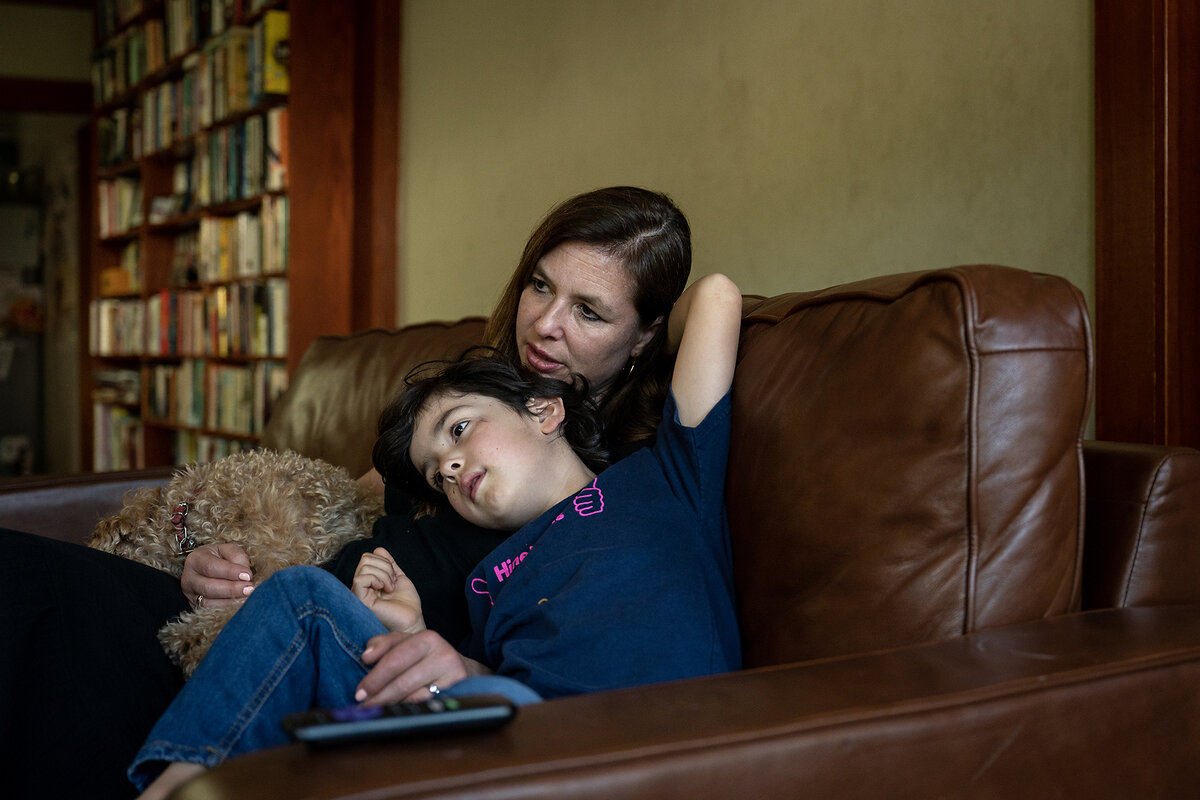
But she was also kept awake by a different set of fears, intensified by the daily deluge of bad male behavior just as #MeToo was going viral. As Ms. Whippman describes it in “BoyMom,” she had “a ticker tape of bad outcomes” for her unborn boy, including “interrupter, mansplainer ... birthday forgetter, frat boy, dude-bro, homophobe, self-important stoner, emotional-labor abstainer, nonwiper of kitchen counters.”
That was seven years ago. And from the looks of things, many experts say, the crisis of masculinity has only gotten worse.
What are we to make of the increasingly perilous place of boys in American society? Without taking anything away from the gains made by girls, can we find a way to provide better support for boys?
A growing chorus of journalists, psychologists, and advocates is helping paint a picture of the ways in which having empathy for the struggles of boys and men is not separate from the feminist project, but in fact essential to it.
Ms. Whippman is one of them. After the long, dark nights of her third pregnancy, she decided to report and write a book on how to find solutions. Her research took her from a residential center in southern Utah to an elite private school in Manhattan, and from the dark web – with its online misogyny – to her own living room, where her three bright sons alternated between ferocious wrestling and nearly comatose screen time. Her conclusion?
Boys are having to navigate a society that “overvalues power and undervalues intimacy and the expression of emotions,” she writes. Talking about harm to boys because of stereotypes about masculinity “is a different conversation from the ‘men are the real victims’ chest-beating of the [political] right,” she continues. “But at some deep level, in this system, men get everything except the thing that’s most worth having – human intimacy.”
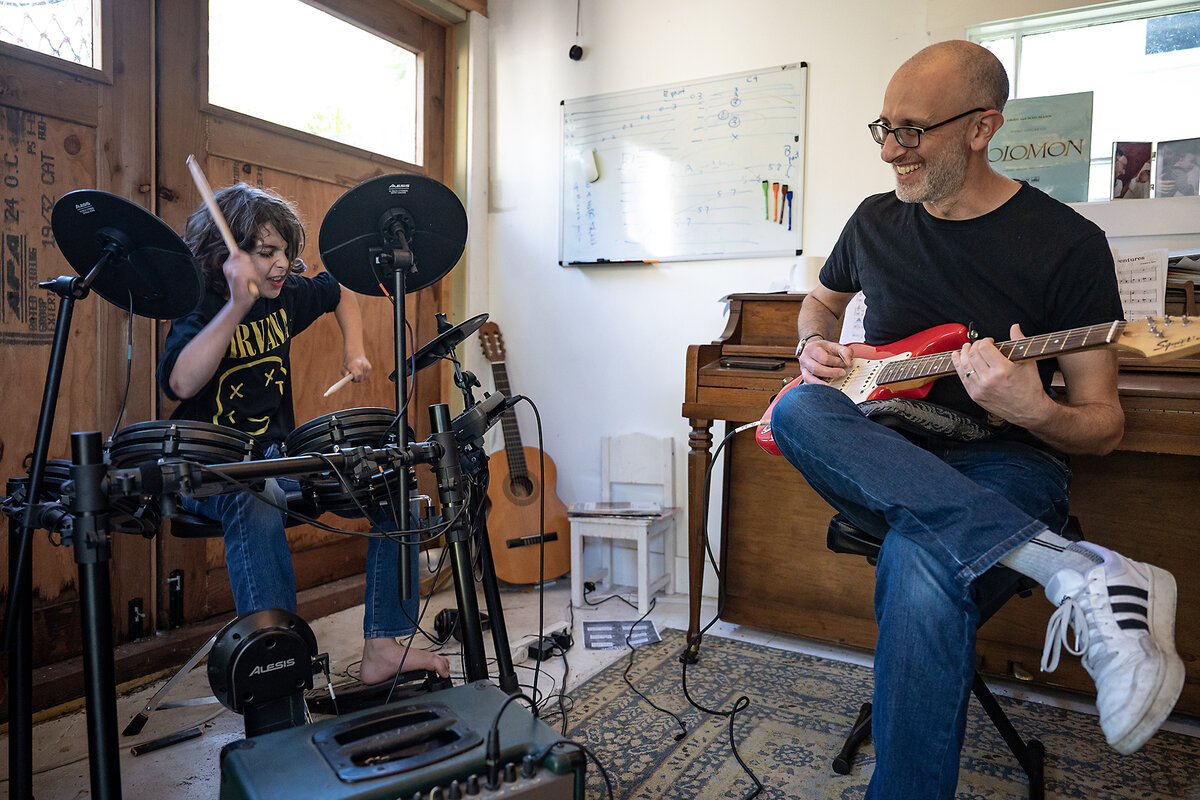
Charles Daniels Jr., a therapist in Boston, agrees with Ms. Whippman’s conclusion. He adds a powerful racial angle to the struggle that boys are facing. Dr. Daniels opened what is thought to be the United States’ first mental health and addiction treatment facility specifically geared to fathers and families, called Fathers’ UpLift, in 2012.
He grew up hungering for his own father, who was unpredictable and unavailable. As he got older, the absence of a male role model grew even more painful.
“When I was younger, I was cute,” he says. “When I got older, I became a threat in the eyes of others. To feel that you’re perceived as a threat – in school, walking down the street – it eats you alive. It’s soul-sucking. It’s draining. It’s anxiety-producing. It etches away from the love that you have for yourself.”
Dr. Daniels felt that if he’d had a present, reliable, and emotionally vulnerable father around, things would have been different.
“Fathers are oxygen,” he says. “You need them to breathe freely as a boy, to understand what you can become.”

Every day his clinic is bustling with this possibility – men who have committed to working on their mental health in order to show up for their children more consistently. Fathers’ UpLift offers therapy, coaching, and organized retreats. It also increasingly offers youth programming to ensure that members of the next generation are getting what they need during their fathers’ personal development journeys.
“The antidote is relational, no question,” Dr. Daniels says. “We ask ourselves, ‘Are we being loving? Are we being caring?’ Black boys and men need that more than ever.”
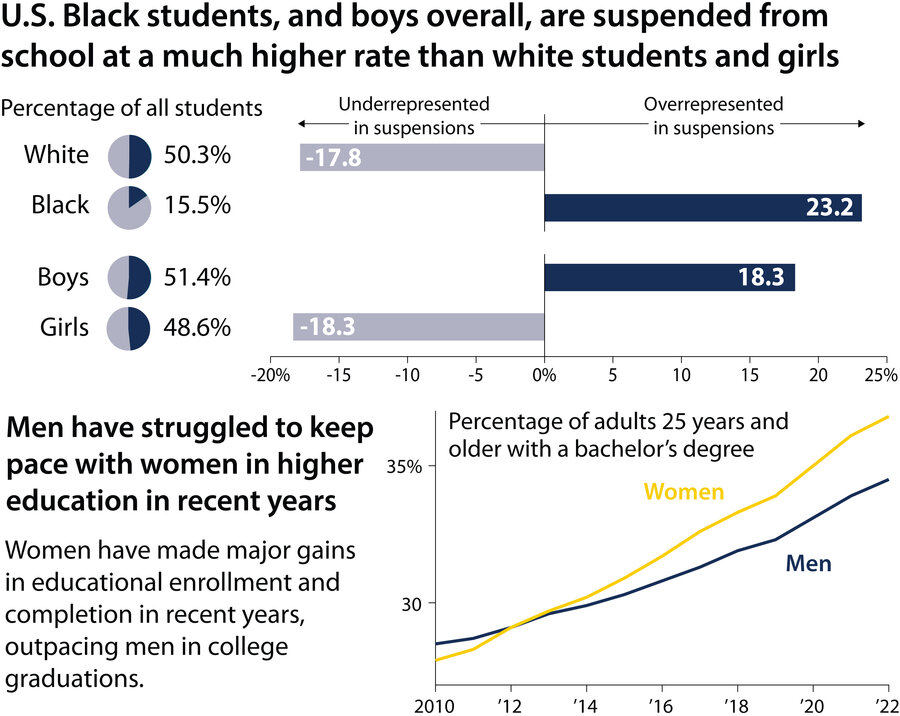
U.S. Government Accountability Office, U.S. Census Bureau
They also need coaches and therapists who look like them. According to the American Psychological Association, over 80% of the psychological workforce is white and nearly 70% is female. To that end, Dr. Daniels has recently created a fellowship to recruit men of color into the mental health and addiction recovery professions.
There is a similar dearth of male educators in American schools – another obstacle to boys learning how to be relational and emotionally literate. According to the most recent data from the National Center for Education Statistics, only 11% of elementary school teachers are men and, of those, only 20% are nonwhite.
Black male teachers are in short supply. In the 2020-21 school year, for instance, only 1.3% of public school teachers were Black men.
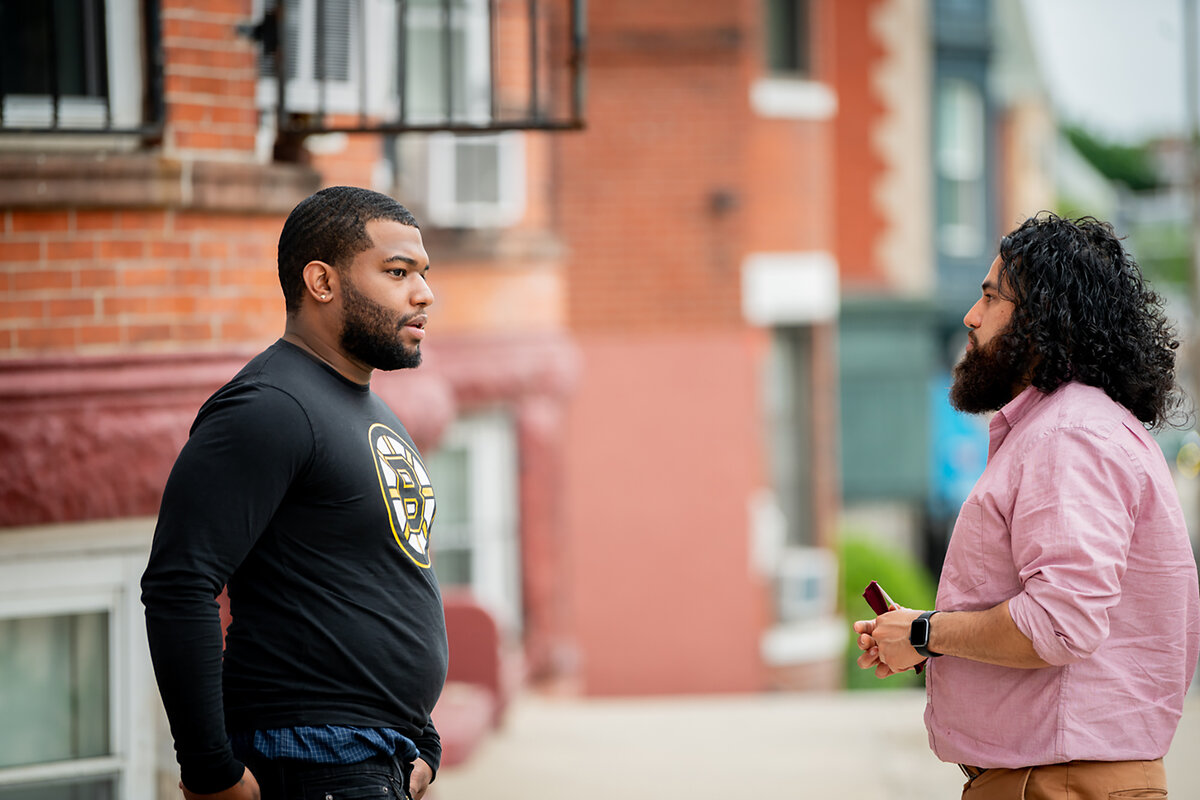
On a recent morning at Emerson Elementary, a Black-majority public school in Oakland’s Temescal neighborhood, the auditorium was packed with parents, grandparents, aunts, uncles, and siblings. Some sat on chairs, many leaned against walls, and most held cellphones at the ready to capture the long-awaited performance on the stage.
They have come for the Black Excellence Showcase, an annual tradition at the school that integrates the Oakland Unified School District’s African American Male Achievement program (AAMA). The program is built around establishing culturally resonant role models. They provide what they call “king care,” helping Black youths and their families thrive.
The event came to vibrant life during the moment in which each of the boys approached the microphone and read a quotation from a notable Black figure that resonated with them personally.
One third grader stepped to the mic and said, “I am no longer accepting the things I cannot change. I am changing the things I cannot accept. Angela Davis.”
The crowd went wild. Tyler Hughes, who runs the AAMA program at two elementary schools, including Emerson, explains, “We used that moment as an opportunity to teach leadership. I’d say, we’re not just reciting quotations. We’re also learning public speaking, how to control our bodies, how to accomplish something together.”
AAMA facilitators conduct a range of activities with the boys, depending on their age. In elementary school, they get pulled out for small-group work using a curriculum called Khepra – an ancient Egyptian word that connotes transformation. It’s focused on “becoming our better selves,” says Mr. Hughes.
Amber Brown’s fourth grade son, Joseph – known as JoJo by his friends – is also in the AAMA program. Ms. Brown is an inexhaustible social force at the school – the one who festooned the auditorium with pink, red, and white balloons for the Valentine’s dance, coordinated the bake sale fundraiser for the fourth grade field trip, and DJed the annual community dinner, getting everyone out on the dance floor for “Cha Cha Slide.”

She’s also the chair of the School Site Council, which looks at the school’s test scores and plans the budget each year according to which students need the most support.
Black male students at Emerson are consistently among those who are furthest behind. As of last fall, only nine out of the 58 boys at Emerson were reading at or above grade level and only two were performing at or above grade level on math.
That’s part of why Ms. Brown so appreciates the school district’s program for boys. Its philosophy is that academic excellence is built on top of mental and cultural health. Ms. Brown says, “It’s beneficial for the young kings. The program fills in the gaps that allow our boys to see their full potential and step into their greatness.”
JoJo, known among his classmates for his short stature, sweet disposition, and ability to do full splits, says he likes being part of the program’s activities, too. Why? “Because I like the people. And they believe in me.”
Facilitators do home visits, look at students’ transcripts, take them out to lunch for one-on-one conversations, and even meet with their academic counselors and teachers – whatever it takes to make sure they’re on track for graduation. “We try to make sure these boys have no regrets, that they get to be proud of themselves for not just calling themselves kings, but really acting like kings, showing kingship,” Mr. Hughes says.
The Oakland Unified School District was the first in the U.S. to create a department that specifically addresses the needs of Black male students. (It also has a sister program – African American Female Achievement.)
That perspective strikes a chord with Dena Simmons, the founder of LiberatED and an expert in social-emotional learning. She wrote her dissertation on bullying and has spent the last 14 years teaching the importance of helping children express what they are authentically feeling.

Dr. Simmons urges an approach that recognizes not only the individual child but also other factors, such as the culture and climate of schools, households, and neighborhoods. “We can’t be emotionally intelligent without being culturally responsive. It’s imperative that we affirm our students’ identities and lived experiences,” she argues. “We must invite them to be partners in their own education, and center racial and social justice and healing.”
This contextual approach is echoed in investigative journalist Emma Brown’s 2022 book, “To Raise a Boy: Classrooms, Locker Rooms, Bedrooms, and the Hidden Struggles of American Boyhood.” She writes, “While boys’ parents undeniably play a critical role in shaping their attitudes and beliefs and behaviors, so do the boys around them – the teammates and classmates and upperclassmen who define what is cool and decide who belongs. Raising boys differently means thinking beyond how we are raising our individual sons to how we are giving boys collective space to create a different kind of boyhood.”
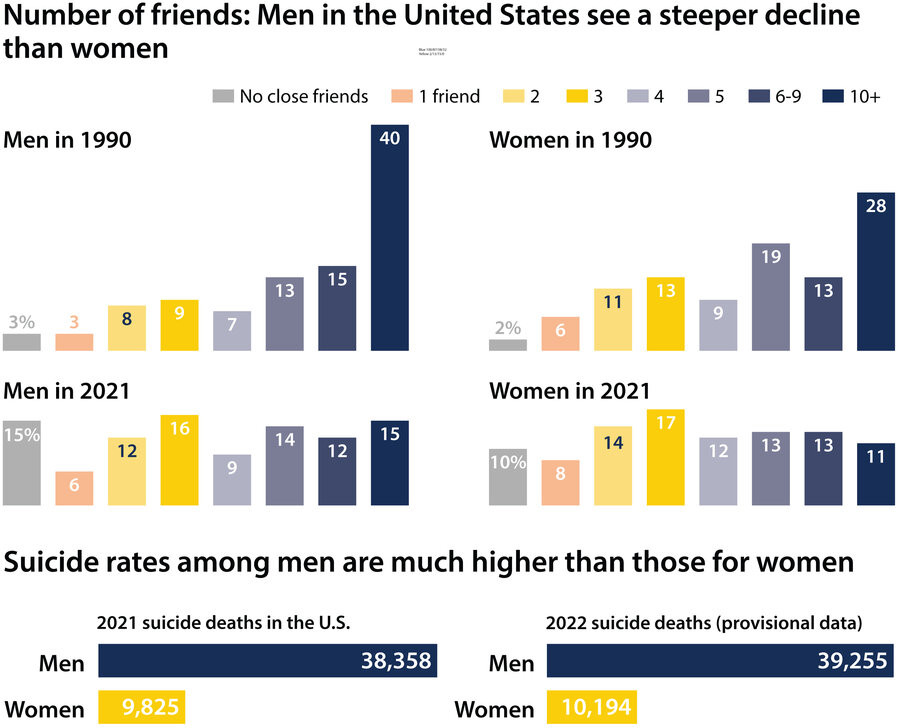
Survey Center on American Life, U.S. Centers for Disease Control and Prevention
That is just what Kimmi Berlin, a writer and mother of two in Montclair, New Jersey, is trying to do. When she had children with her then-husband, a stand-up comedian, she really wanted to raise them outside the antiquated gender norms she had been given as a girl. But she and her husband were stumped. “We knew the old scripts didn’t work, but we didn’t even know what the new scripts were,” she says.
When their 2-year-old son was told by a preschool teacher that she “liked him more when he didn’t cry,” they were worried. They asked her to encourage their son’s full range of emotion, but they also craved a more collective solution.
That’s when Ms. Berlin decided to create Build Up Boys, an organization that trains educators and caregivers how to help boys “preserve their innate emotional intelligence,” working with young boys directly.
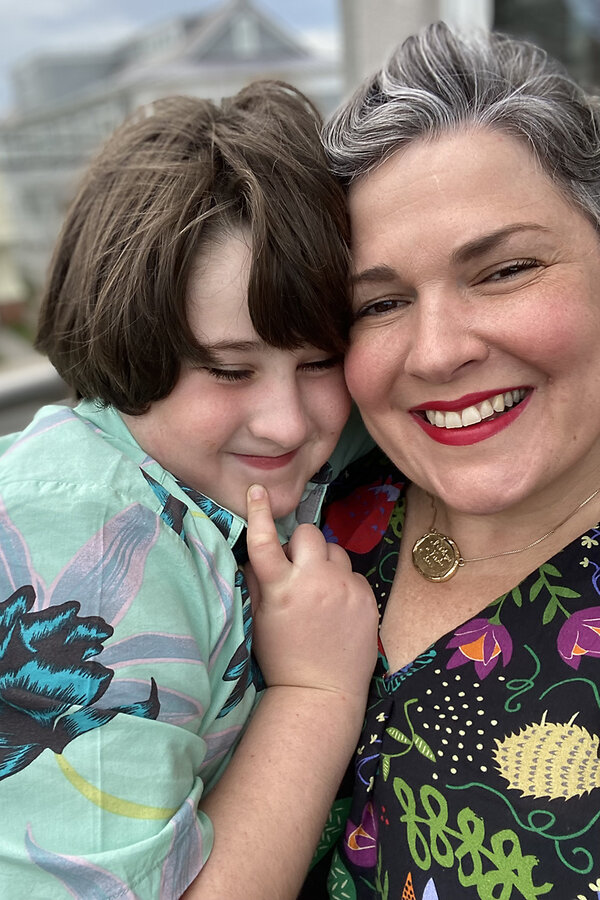
Unlike many interventions in this space, Build Up Boys believes that this kind of countercultural programming needs to start early. “The research tells us, boys start trading their humanity for social currency as early as 5 years old,” Ms. Berlin explains. “We have to give them permission to hold on to themselves.”
Ms. Berlin is referring to the seminal research of Dr. Judy Y. Chu, who conducted a two-year study in 2014 that followed boys from prekindergarten through first grade. She found that they lost their early abilities to be emotionally responsive in relationships when they read cultural cues that labeled these “feminine” qualities. New York University professor Niobe Way also named this a “crisis of connection” in her 2013 book, “Deep Secrets,” which focused on older boys around age 16.
“A range of studies confirm ... that the more closely men and boys conform to traditional masculine norms, the more likely they are to be depressed or suicidal,” reports “BoyMom” author Ms. Whippman. They are also more likely “to perform poorly in school and to engage in risky and unhealthful behaviors” while also being less likely to seek mental and physical health care.
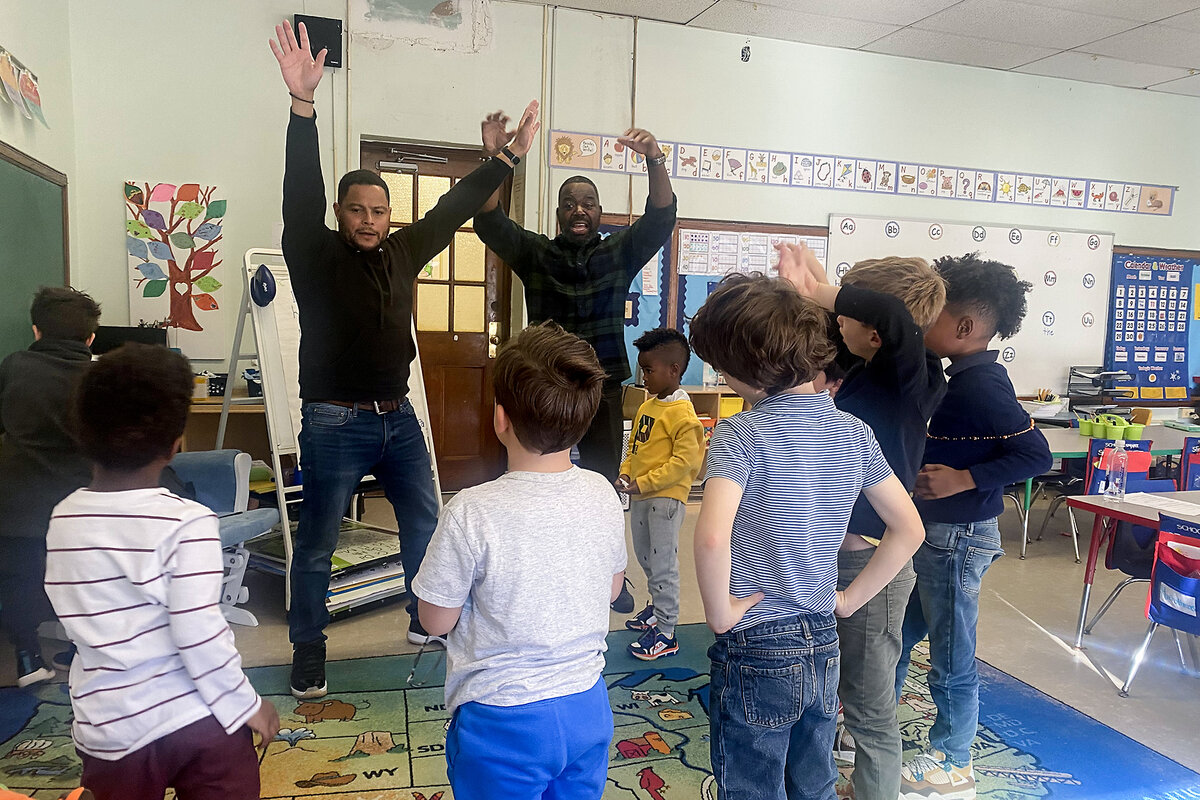
Ms. Berlin, who has a background in theater, used this research as a jumping-off point to design a play-based curriculum for young boys. One example is a reimagined game of the old standby Red Light, Green Light. Boys pair up and take turns controlling the distance. The goal is to pay attention to their bodies and how it feels not to be in control and then put words to the experience. Ms. Berlin says, “Maybe you’re paired up with a kid who is sensory-seeking, and he doesn’t mind you getting very close. And maybe the other kid is sensory-avoidant, and getting close feels scary and he hates it. We learn to say that out loud with granular emotional vocabulary.”
After one recent workshop, a participant went home and told his mom that he didn’t like being kissed on the mouth by her – something he’d never been able to articulate before. “That felt huge,” Ms. Berlin explains. “If a 7-year-old boy can learn to feel his own boundaries and say them out loud now, when he reaches puberty, he will be so much more likely to respect other people’s boundaries – sexual and otherwise.”
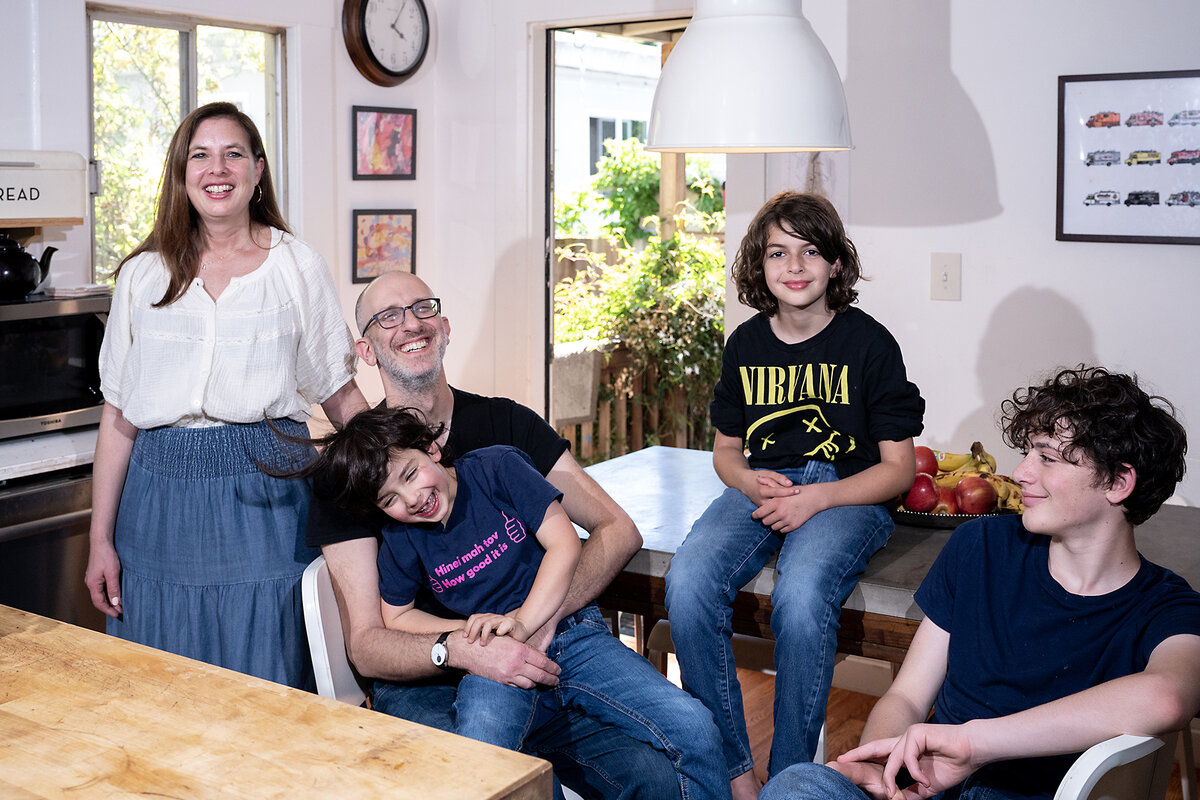
Which gets back to Ms. Whippman’s deep fears about her own sons. She doesn’t want them to be harmed, and she doesn’t want them to cause harm as they grow into men. Her oldest son, Solly, was just bar mitzvahed – a Jewish coming-of-age ritual. “It was a moment to bring everyone together,” he says. “My dad had one. My grandpa had one. You dedicate yourself to this one thing, and you’re nervous, but you look out and see everyone, and you know that even if you mess up, they won’t criticize you. When it’s all over, you feel really proud of yourself.”
It was a full-circle moment for Ms. Whippman. “The main joy was seeing him welcomed into his community – a place where he will be held accountable and asked to take responsibility, but also be loved and supported,” Ms. Whippman explains. “So many cultural forces push boys and men away from intimacy and community, so this ritual felt like a great counter to that.”

U.S. Government Accountability Office, U.S. Census Bureau

Essay
A love letter to lilacs and the joys of fleeting pleasure
The desire to capture natural beauty, whether in a photograph, a painting, or even a perfume, is intrinsic. But in that quest, we sometimes lose sight of a central tenet: Nature’s ephemerality makes it all the more enchanting.

- Quick Read
- Deep Read ( 4 Min. )
-
By Lily Stewart Contributor
I grew up with a lilac shrub outside my bedroom window. Each May, when the breeze hit just right, the scent would trail through the screen.
And how nice that scent was. Light, tender, sweet, sunny, vegetal. I loved it. There was no better promise of the upcoming months of lakeside walks, dewy mornings, and twilights spent chasing fireflies.
The bloom was always brief, though, only lasting two weeks. I longed for it after it faded.
Perfumers have tried to capture the scent of lilacs, but it’s a challenging task. What makes lilacs’ smell so alluring is a combination of about 200 volatile compounds in the oils that form on the petals. These compounds cannot withstand the high heat and steam of the distillation process. Fragrance houses from Guerlain to Givenchy have attempted lilac perfumes, but none stand up to a true flower.
My mission: to preserve the scent through a technique called enfleurage, a tedious process requiring placing fresh petals into a neutral fat every day for two weeks. Would I be able to capture that fleeting scent?
A love letter to lilacs and the joys of fleeting pleasure
I grew up with a lilac shrub right outside my bedroom window. Each May, when the breeze hit just right, the scent would trail through the screen.
And how nice that scent was. Light, tender, sweet, sunny, vegetal – even a bit indolic, sharing the same dirty base note found in jasmine and tuberose. The sillage bordered on overwhelming, particularly on humid days when the scent clung to the wet air. It was difficult to believe that such a potent fragrance could emerge from four-petaled florets no larger than the fingernail on my thumb, clustered together into cones of wild perfume.
I loved it. There was no better promise of the upcoming months of lakeside walks, dewy mornings in the garden, and twilights spent chasing fireflies to the soundtrack of peeping tree frogs.
The bloom was always brief, though, only lasting two weeks before making way for the next rounds of flowers – iris, yarrow, honeysuckle, coneflower – each tossing its own scent into the bouquet of summer.
Removed from their shrubs, lilac clippings didn’t last long inside my home, either. Cuttings in a vase lost their turgor, incapable of drawing up the water and nutrients that once kept them supple. Flowers pressed into clay browned at the edges. Petals dried on paper lost all but faint traces of their original scent as their essential oils faded.
Still, I kept attempting to capture the lilacs, especially their scent, unwilling to let two weeks of fragrance come and go after a year of anticipation. During the long flowerless gap between the chrysanthemums of late fall and skunk cabbages of early spring, I craved a scented reminder of life and joy and beauty in full swing.
Perfumers have long tried to capture the scent of lilacs, but it’s a challenging task. What makes lilacs’ smell so alluring is a combination of about 200 volatile compounds in the oils that form on the petals. These compounds, with unromantic names like
(E)-beta-ocimene and benzyl methyl ether, are delicate. They cannot withstand the high heat and steam of the distillation process that extracts essential oils from other flowers like rose or gardenia. The scent can be imitated through synthetic compounds, but those fail to grasp the petals’ richness. Fragrance houses from Guerlain to Givenchy have attempted lilac perfumes, but none stand up to a true flower.
Consequently, the best way to preserve the scent is through a technique called enfleurage. To create an enfleurage, a perfumer places petals, leaves, bark, or whole flowers into a solid layer of neutral fat, traditionally tallow or lard. The plant’s oils melt into the fat, infusing their scent into the base. The petals are replaced daily over the span of days or weeks, allowing the perfumer to introduce fresh oils to strengthen the scent. Then, the pomade can be used as a solid perfume, rubbed along the pulse points at the neck and wrist to diffuse with body heat.
I was set on developing a lilac enfleurage from my own shrub. I gathered a glass pan, unscented coconut oil, a pair of scissors, and my wicker basket, which I filled with about a hundred tiny florets each day. I smeared the oil in an even layer across the glass container and then positioned the florets one by one. They sank into the oil, slimy and slippery. I changed them every morning.
After a fortnight of rotating petals, I scooped the oil into a mini Altoids tin and smoothed it over with a spatula. Overnight, it hardened into a slippery, yellowed balm.
And it did not smell good.
Somehow, the mixture had fermented. I was left with heaps of bready, coconutty lilac sludge, which I tried to pawn off onto my sister and friends. No takers. Then I gifted the Altoids compact to one unfortunate recipient, only for the sun-heated mixture to melt out of the tin all over her car. The odor lingered for weeks.
I had clung to the hope that I could bottle – or encase in an old tin – the newness and freshness and fullness of all the springs I had lived through with my beloved shrub. But all the coconut oil in the world could not suspend a fresh lilac in its mid-May state of florescence.
On the face of it, it may seem like my experiment was a failure. But I see it as a success, just not the one I had originally anticipated.
I did not capture the lilac’s scent, but the time I spent with the shrub became more important than the pomade I sought to produce. I spent all two weeks of the bloom outside fiddling with lilac twigs, gently brushing away bees vying for the same flowers. I learned the knobs on its branches and came to appreciate the ruby-throated hummingbirds that visited for nectar. Even though the flowers lasted just a handful of days, they attracted and supported other life. Only through my time plucking flowers did I come to recognize the extent of that support.
I still want to try enfleurage again. Not because I think I will discover the secret elixir, but because I want to connect with my shrub once more.
If anything, lilac blossoms’ ephemerality makes them all the more enchanting. Not being able to preserve them year-round makes their brief bloom special, a do-not-miss event. And though I miss the flowers the majority of the year, there’s joy in the anticipation of seeing them again and experiencing their allure. So, between flowerings, I carry the lilac’s scent not in oils on my wrists but as memories in my mind and wonder in my heart.
Other headline stories we’re watching
(Get live updates throughout the day.)The Monitor's View
A revolution of respect in France
- Quick Read
- Deep Read ( 2 Min. )
-
By the Monitor's Editorial Board
Readers of the French newspaper Le Monde were confronted with a striking image on the front page Tuesday. It showed 100 public figures with personal stories of sexual violence implicating some of their country’s most venerated institutions – cinema, government, media, hospitals, and churches. The paper called the visual “unprecedented in our history.”
After years of halting public debate, France may be at a turning point on an issue that challenges some of its deepest social and cultural mores. Rather than unraveling French identity, however, the opening of a more honest public reckoning reveals a society striving to renew its core values of equality and individual dignity.
“We are at the beginning of a transition ... a very profound cultural change,” said President Emmanuel Macron in an interview with Elle magazine last week. “The first stage is that of the liberation of speech, after all these years of suffering and unsaid things. With this listening, grant freedom, trust and kindness to the victims. ... When systems – whether professional, religious, structural – are organized as systems of humiliation, of domination, they betray our values and sully us all.”
“The difference now,” Clémentine Poidatz, a French actor, told The New York Times recently, “is people are listening.”
A revolution of respect in France

Readers of the French newspaper Le Monde were confronted with a striking image on the front page Tuesday. It showed 100 public figures with personal stories of sexist or sexual violence implicating some of their country’s most venerated institutions – cinema, government, media, hospitals, and churches. The paper called the visual “unprecedented in our history.”
After years of halting public debate, France may be at a turning point on an issue that challenges some of its deepest social and cultural mores. Rather than unraveling French identity, however, the opening of a more honest public reckoning reveals a society striving to renew its core values of equality and individual dignity.
“We are at the beginning of a transition ... a very profound cultural change,” said President Emmanuel Macron in an interview with Elle magazine last week. “The first stage is that of the liberation of speech, after all these years of suffering and unsaid things. With this listening, grant freedom, trust and kindness to the victims. ... When systems – whether professional, religious, structural – are organized as systems of humiliation, of domination, they betray our values and sully us all.”
The #MeToo movement that catalyzed public debate about sexist and sexual violence in the United States several years ago encouraged intermittent scrutiny within France. But the issue has gained new momentum in recent months since an actor named Judith Godrèche accused two of France’s most prominent directors of abusing her on set when she was teenager. She has addressed Parliament and spoke at the César Awards, France’s equivalent of the Oscars. A documentary film she wrote and directed on sexual violence debuts this week at the annual Cannes Film Festival, which opened Tuesday.
Her advocacy has broken a dam. More victims are speaking out. Their defenders face fewer attacks on social media. Parliament has agreed to form a commission on sexual violence against minors in various cultural sectors, including fashion, at her request. “The difference now,” Clémentine Poidatz, another French actor, told The New York Times recently, “is people are listening.”
That receptivity coincides with mounting evidence of wider changes in attitudes about equality and acceptable behavior within French society. The film industry is embracing changes that create safer working conditions for actors involved in romantic scenes. In March, France enshrined reproductive rights in its constitution. Younger women are rejecting workplace taboos around feminine hygiene. Vocal critics of sexual violence include the ministers of sport and the armed forces. Mr. Macron has promised a comprehensive bill later this year that would, among other things, redefine France’s legal concept of consent.
Societies are not static. They adopt higher standards when public debate results in “improved interpersonal understanding ... increased respect among participants ... [and] better solutions to a variety of practical, moral and intellectual problems,” a 2019 study on social change published in the Journal of Experimental Social Psychology concluded. For France, and French women in particular, an honest dialogue marks a renewing of equality, fraternity, and liberty.

A Christian Science Perspective
Each weekday, the Monitor includes one clearly labeled religious article offering spiritual insight on contemporary issues, including the news. The publication – in its various forms – is produced for anyone who cares about the progress of the human endeavor around the world and seeks news reported with compassion, intelligence, and an essentially constructive lens. For many, that caring has religious roots. For many, it does not. The Monitor has always embraced both audiences. The Monitor is owned by a church – The First Church of Christ, Scientist, in Boston – whose founder was concerned with both the state of the world and the quality of available news.
Love really can defuse hatred
- Quick Read
- Read or Listen ( 3 Min. )
-
By Ellen Wolf
Knowing the truth that we are all the children of divine Love helps us see more of the safety and harmony that are all around.
Love really can defuse hatred
A friend and I were having a conversation about this statement: “Clad in the panoply of Love, human hatred cannot reach you.”
This can be found in the Christian Science textbook, “Science and Health with Key to the Scriptures” by Mary Baker Eddy, on page 571. Love capitalized is synonymous with God.
This sentence is part of an exegesis of an allegory from the book of Revelation. In the story, an evil serpent, symbolic of the devil, is chasing down an innocent woman. The serpent brings forth a flood so the woman might be carried away. But the earth consumes the water, and the woman is safe (see Revelation 12:15, 16). I remarked to my friend that it’s worth considering that the water, the evil, never even touched the woman.
My point was that the reason human hatred cannot reach us is because we truly are held in the arms of God, good, safe and secure. Divine Love, God Himself, is always caring for man, which includes each of us as we really are, wholly spiritual. Our need is to recognize this reality and trust it. With God as our preserver, we don’t need to fear.
My friend then shared her own inspiration about what God’s care means for us, that ultimately human hatred cannot reach anyone’s thought, even someone who might appear to be full of hate. What a great point. No one, in their spiritual identity as God’s precious child, can entertain or spew hatred, because each of us has been created to reflect and be animated by God’s love. Like the reflection in a mirror, as God’s reflection man loves because God is Love, as the Bible says (see I John 4:16). Consequently, hatred is inconceivable because God is the one Mind, who knows only love.
The Bible has numerous accounts where hatred and violence were defused by the power of divine Love. One example is Christ Jesus breaking up the imminent stoning of a woman accused of adultery (see John 8:1-11). Jesus said to those ready to kill her, “He that is without sin among you, let him first cast a stone at her.” All the accusers left. Then Jesus said to the woman, “Neither do I condemn thee: go, and sin no more.”
As he always did, Jesus was turning to God, listening for Love’s direction in those moments. It’s clear to me that divine Love stopped the intended violence and fully protected and restored this dear woman.
Last summer, I had the opportunity to turn to this same divine Love to address ongoing crime. Significant car theft and vandalism had found its way to my neighborhood, and my car was one of those that was badly damaged. As disconcerting as this was at first, as a Christian Scientist I knew that the law of divine Love is always in operation, and a loving God would not create either a victim or a perpetrator of crime.
A week later, I cracked the front door open at night for some fresh air and was startled to see a young man sitting on my front porch. It seemed right to contact the police. An officer soon arrived, but he informed me that due to current policies, he wasn’t able to question this man. Shortly after, I heard some noise, looked out the window, and realized that this fellow’s partner had arrived, and they were starting to scout cars in the parking lots.
I began to pray, to know and trust that God was governing each one of His children, as well as the community at large. Gratefully, there weren’t any reports of vandalism the next day.
I continued to hold to this true view of the inherent goodness of the young man I had seen. I knew he was the upright child of God, free from wrong intent and criminal activity. There were times when I honestly felt as much love for him as if he had been my own son. Those moments were precious to me and brought joy and peace.
Very shortly thereafter, the rampant car theft and vandalism in my neighborhood ceased.
Every loving, Godlike thought makes a difference in resolving these sorts of situations. Any effort to cherish goodness and purity where they seem absent helps turn unacceptable circumstances around.
There are endless opportunities to heal through expressing divine Love. And Love is always there for us.

Viewfinder
Cannes goes canine

A look ahead
Thank you for joining us today. We hope you’ll come back tomorrow. Our Africa correspondent, Ayen Deng Bior, takes a deeper look into the trend of harsh anti-LGBTQ+ laws sweeping across the continent and finds questions around “Africanness” and influence beneath the surface.


